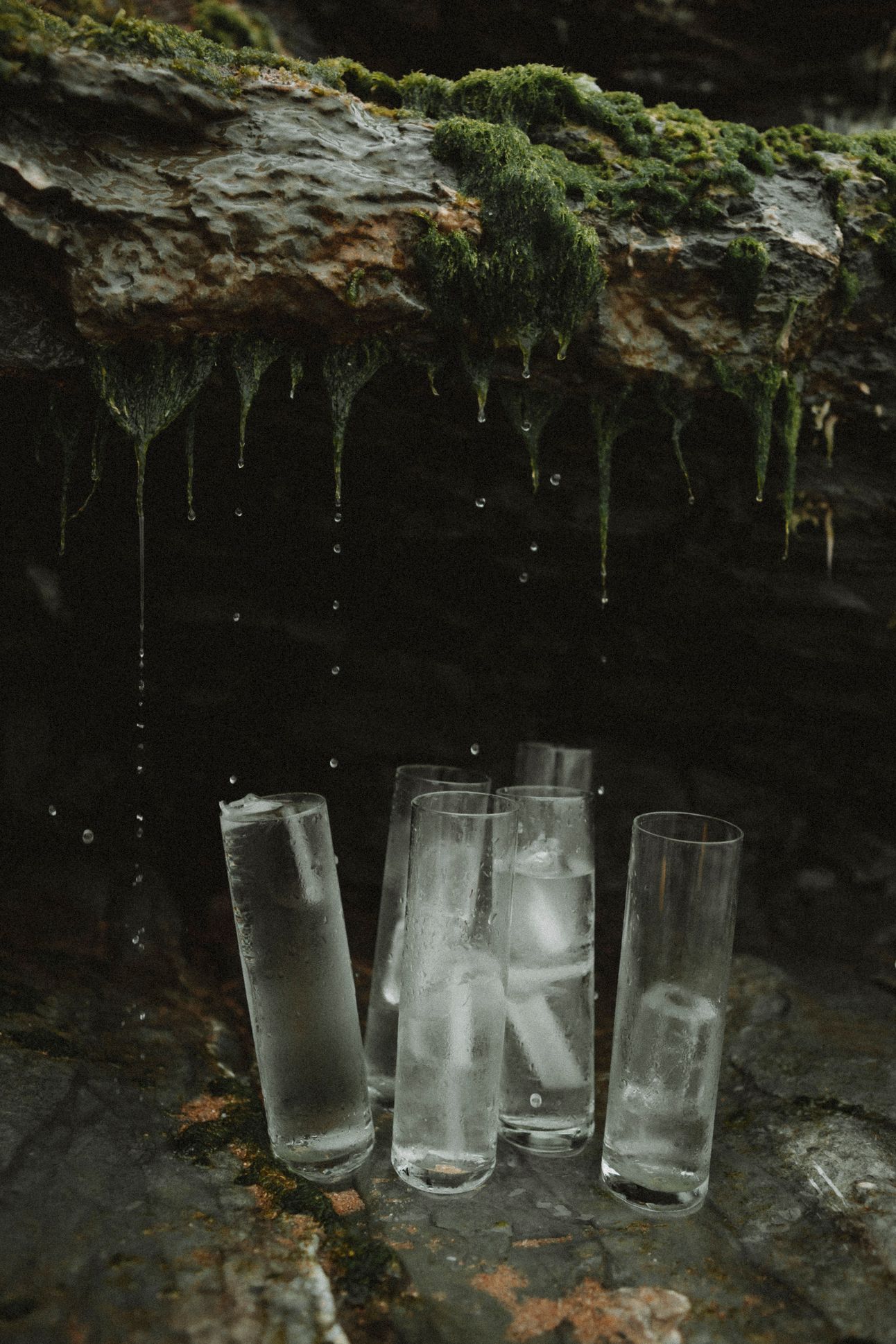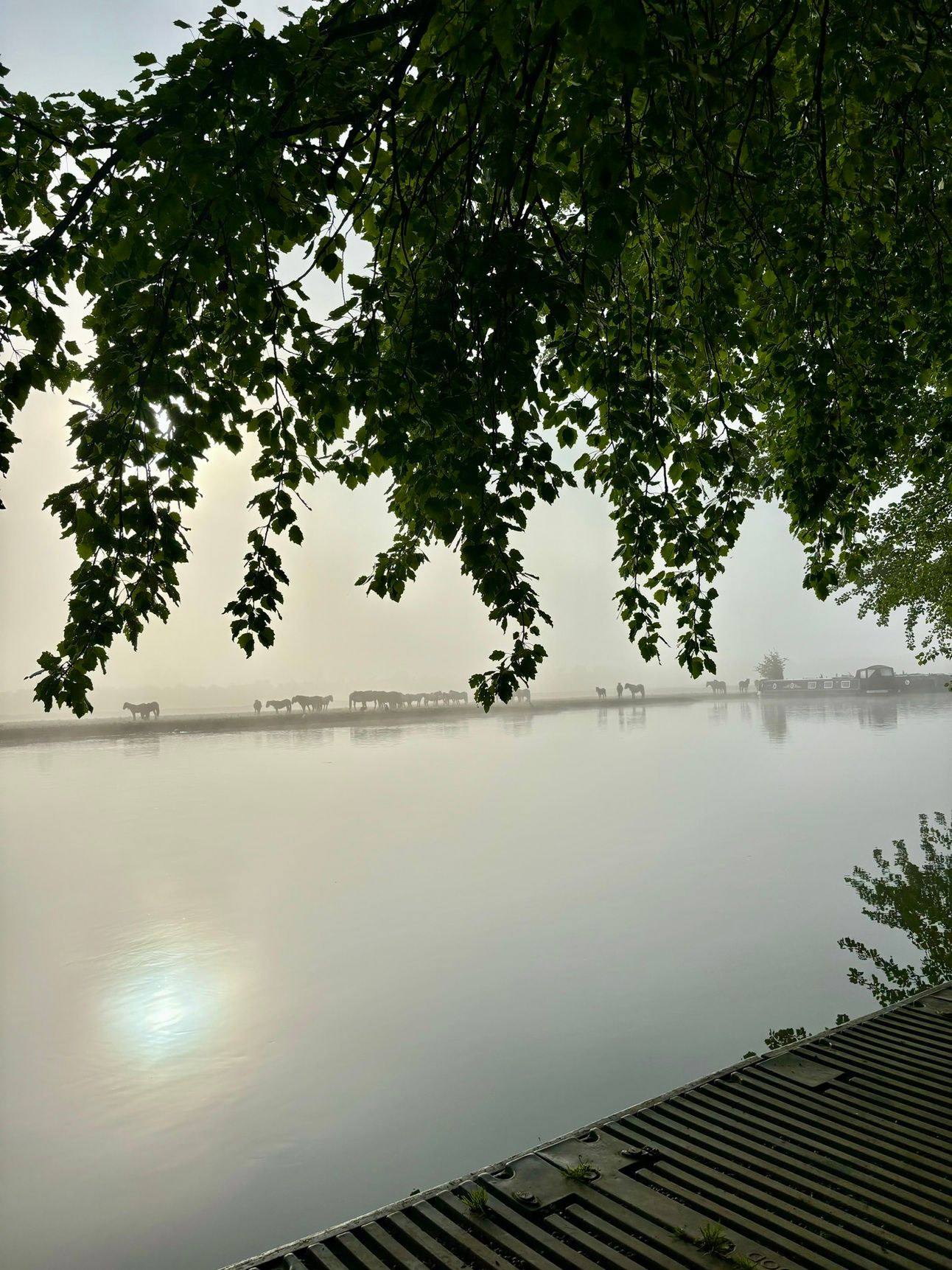- WATER WELLNESS
- Posts
- ☁ The State of Mind Behind the Shelf
☁ The State of Mind Behind the Shelf
And my take on the Hello Klean shower filter.
THE WATER METHOD TO WELLNESS
HEY FROM THE SHOREWelcome to the source. Around here, water isn’t just something you drink, it’s how you live. Curious. Intentional. Effortless. Less products, more presence. Because if your self-care routine pollutes water, is it really wellness? We’re here to cut through the noise, bust hydration myths, and help you reconnect; with the water in your cells, your watershed, and what truly matters. Connection. Community. Curiosity. |  |
If someone forwarded you this email, you can subscribe to get future issues directly in your inbox 💌
Splash of the Week
The State of Mind Behind the Shelf. What we consume matters less than what we embody.
Wellness has become a full-blown industry. But before it was a colour-coded shelf in your bathroom, it was something far simpler.
While many of the practices we associate with wellness today, like breathwork, cold plunges, herbal tea, have roots stretching back through ancient Greek, Chinese, and Indian traditions, it wasn’t until the mid-20th century that “wellness” became a cultural identity. Something to buy into. Literally.
Water. Forests. Sunlight. Clouds. These elements carry more wellness than a drawer full of serums. Water heals not just through hydration or mineral content, but through the act of immersion. The float. The surrender. The calm. The rain. The play.
Modern wellness often emphasises products: devices, supplements, subscriptions. But when you strip it back, before it became a consumer category, wellness was and still is a way of thinking. A way of living. A way of choosing what to protect, what to treasure, what to share.
It’s not just what you eat. Or what you wear to pilates. It’s what you value. It’s how you show up for others.
Traditional medicine systems (read: Ayurveda, Traditional Chinese Medicine, etc.), saw health as harmony. Not just atoms and cells behaving, but people aligning. The mind and the body were not separate. Community and ethics were part of the health equation. Healing wasn't isolated, it was integrated. In your body. And society.
So where did we go off track?
Wellness culture today often picks and chooses. It borrows language and practices, such as “energy,” “balance,” “detox”, but tailors them for individual consumption rather than collective well-being.
It's a smoothie of ancient ideas, strained through the filter of consumer demand.
That’s why I often find myself returning to the Stoics. Their philosophy wasn't a self-help manual to “live your best life.”
It was a call to live a good life.
A useful life.
A principled life.
It was about virtue, reason, and, importantly, responsibility to others. Marcus Aurelius didn’t write his Meditations to get brand deals. He wrote them to remind himself how to be of service, even when everything felt like a mess.
Why do I keep going back to Stoicism? Because it reminds me that wellness isn’t about optimising my morning routine, it’s about refining my moral compass, my state of mind. It’s about living according to your inner clarity when the external world is chaos.
And here’s something to think more about: wellness culture tends to thrive in low-trust societies (refer to “visionary voices” section below for the source). When systems feel shaky, healthcare, governance, community, we look inward. We try to self manage what feels collectively mismanaged. That’s understandable. But maybe the answer isn’t in more stuff, or even more self-focus. Maybe it’s in clearer values. A clearer mindset. More connection. More community.
So next time you find yourself spiraling down an online rabbit hole of magnesium mist, moon-charged collagen, adaptogenic powder, or a $100 face oil “infused with calm,” maybe pause.
Take a walk.
Drink some water.
Look at the clouds.
Talk to someone you love.
Wellness doesn’t live in your cupboard. It lives in your choices, your thoughts, your values. Wellness is less what you buy and more how you show up. Start there. No subscription required.
— Clouds
P.S. If you enjoyed this post, hit reply and let me know!
The Essentials
YOUR HYDRATION EDIT
Each edition, we handpick stories, trends, and insights that connect with our Water Method philosophy. From the source of your water to how you move, restore, and live around it—plus the latest in wellness real estate, the fastest-growing sector in the wellness world.
TRUSTING AI WITH YOUR WELLNESS?A growing trust gap in AI. 82% Are Skeptical, Yet Only 8% Always Check Sources | GLACIAL BATHING IN THE ROCKIESWill glacial waters be the next “natural wonder of bathing”? |
ESG IN HOSPITALITY?Hotels increasingly say wellness, but does the data match the promise? | MEETING THE DEMAND FOR WELLNESS TRAVEL?Demands are shifting. Are hotels keeping up? |
☁ Visionary Voices
Currently Reading: Wellness Culture: How the Wellness Movement Has Been Used to Empower, Profit and Misinform by Stephanie Alice Baker
I’m currently reading Wellness Culture by Stephanie Alice Baker. It traces how wellness shifted from an alternative idea to a widespread cultural force, and now a major industry.
What stands out to me is the book’s chapter on care literature, a collection of mid-20th-century writings that think about care not just as personal self-help, but as a relational practice. It’s about how we show up for ourselves and others, with empathy and responsibility.
The Care Movement and the associated ethics of care emerged as a response to traditional models that viewed health and morality in isolation, focusing mainly on individual autonomy or abstract principles. Instead, ethics of care emphasises the importance of relationships, context, and the ongoing responsibility we have to nurture and support each other. It’s a quiet but important reminder of what true wellness might actually look like beyond all the noise. And a snapshot of how the industry evolved, from ancient Stoics to modern influencers.
THE BOOK →
The Playbook Edit
WAIORA RITUALS. YOU ASKED. WE ANSWERED.
This one’s for you, Agatha: Does the Hello Klean filter actually soften water?
Does Hello Klean Actually Soften Water?
Short answer: Not really.
Hard water means water with high levels of calcium and magnesium ions. Traditional water softeners use ion exchange (usually salt) to remove these minerals.
Hello Klean’s ingredients do not remove calcium or magnesium; the minerals that cause scale, dry skin, and dull hair.
As I revisited their website, I was intrigued by Hello Klean’s new water hardness scanner. Their site said our water hardness was 314 ppm, while Thames Water reports closer to 255 ppm for the area. (Water hardness measures calcium carbonate, chalk, in ppm, on a scale from 0 soft to 400 hard.) That’s not very accurate. And the company talks about hard water a lot. Not a great look.
Here’s the thing: Hello Klean doesn’t actually remove hardness minerals like calcium or magnesium. So technically, it doesn’t soften water the way traditional water softeners do. This is all about sensation, not science. That said, it does remove pollutants (heavy metals and chemicals). Like most other shower filters do. But they advertise more truthfully. However, Hello Klean’s design might look nicer.
What Hello Klean Does and Doesn’t Do
KDF-55 (Copper-Zinc Alloy):
Removes chlorine and metals like lead, mercury, and iron, great for cleaner water and softer skin. Does not remove hardness minerals.
Amino Acid Granules:
Help protect your skin from heavy metals and support your skin barrier. No effect on hardness minerals.
Activated Carbon (Coconut Shell):
Traps chlorine, odors, and organic compounds improving water quality and scent. No effect on hardness minerals.
Ceramic Beads (Tourmaline, Anion):
Found in both the showerhead filter and the additional inline filter versions. These help balance pH slightly and energize water but do not remove hardness minerals.
Why Water Can Feel “Softer”. Even When It’s Not Softened.
Chlorine is gone and that makes a big difference. Chlorine strips your skin’s natural oils and disrupts your microbiome. When a filter removes or neutralises chlorine (like with KDF or calcium sulphite), water no longer feels drying or tight. Result? Skin feels softer, calmer, less irritated.
I don’t have a shower filter at the moment in the UK, and an ion-exchange solution in Germany. Let us know how you get on with your shower filter if you have one.
A Final Note
NOTES FROM THE MEADOW

Port Meadow, Oxford.
"To live a good life: We have the potential for it. If we learn to be indifferent to what makes no difference."
Landed here by chance? Stick around — we make hydrating way more fun. Hit subscribe.
Until next time! ☁
Disclaimer: We do not provide medical or nutritional advice. The content shared here is for informational and educational purposes only—to inspire a more mindful, empowered relationship with water.